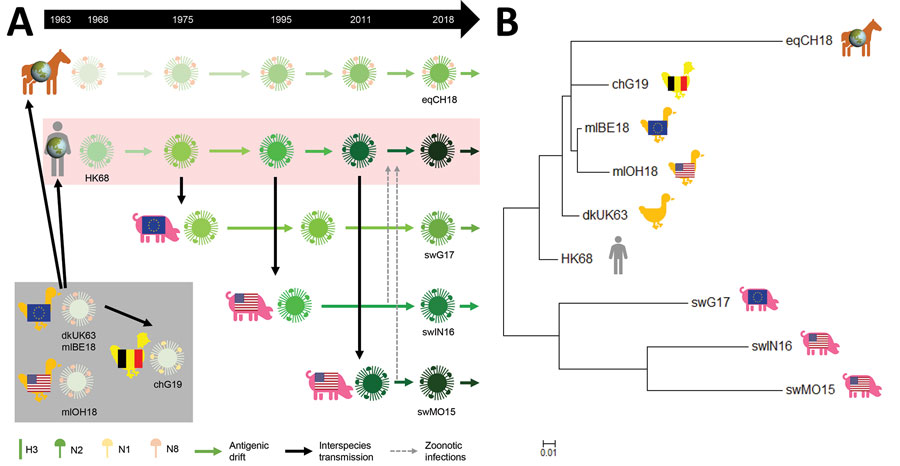Volume 29, Number 1—January 2023
Research
Human Immunity and Susceptibility to Influenza A(H3) Viruses of Avian, Equine, and Swine Origin
Figure 1

Figure 1. Epidemiologic and phylogenetic relationship between avian, equine, human, and swine influenza A test viruses. A) Schematic positioning of the test viruses in the influenza A(H3) virus epidemiology. B) Maximum-likelihood neighbor-joining phylogenetic tree of the hemagglutinin 1 of the test viruses. Complete isolate names are provided in [[ANCHOR###T2###Table 2###Anchor]]. Scale bar indicates amino acid substitutions per site.
Page created: November 30, 2022
Page updated: December 21, 2022
Page reviewed: December 21, 2022
The conclusions, findings, and opinions expressed by authors contributing to this journal do not necessarily reflect the official position of the U.S. Department of Health and Human Services, the Public Health Service, the Centers for Disease Control and Prevention, or the authors' affiliated institutions. Use of trade names is for identification only and does not imply endorsement by any of the groups named above.